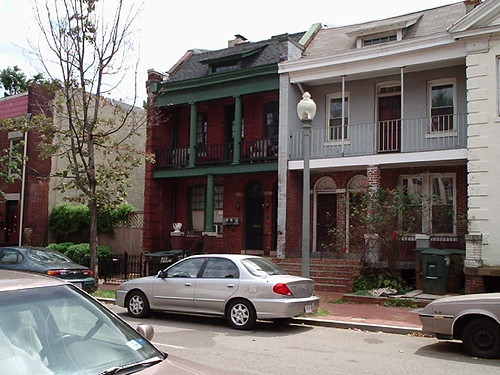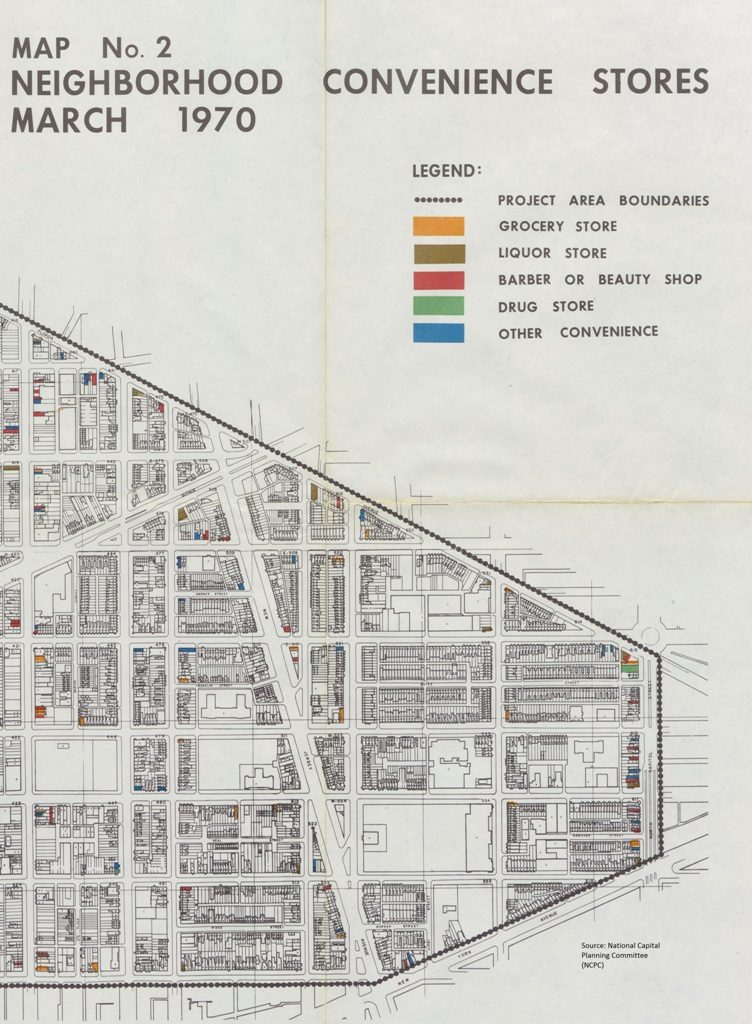
In the past couple of weeks I have been in contact with people in the commercial sphere about history, and this had me thinking. If you were raised in a place, maybe a suburb, where commercial buildings and activities are segregated from residences, you might be under the impression that this is the way things are supposed to be. It might even cloud your view of history.
The wonderful things about cities, older East Coast cities, is that there was mixed use before things like zoning. People lived in close proximity to their jobs and the businesses they used. A building could house a family and a store, or a one time be a store and then maybe later a residence.
The map above is just of stores. It does not point out the warehouses around Hanover Street and the working dairy where Mt. Sinai and the Northwest Co-op sit, but you can see their outlines. The other thing to take into account is this is 2 years after the 1968 riots, many businesses did not rebuild or return, depressing the neighborhood even further.
When I moved into the neighborhood in the early aughts, there was annoyance at the types of businesses that were filling the commercial corridors of Florida Avenue and North Capitol and spaces in between. Those businesses were liquor stores (brown on the map) and beauty parlors (red on the map). Those were pretty much the only things taking up spaces left empty 30 years prior.
Reading post-riot reports where business owners had an opportunity to say something, the area had problems before the riots. The riots just made a bad situation worse, and businesses, along with residents began to leave. Now contrast that with today, where businesses want to come to Shaw. The number of sponsors for the Shaw Main Street’s Art All Night was an embarrassment of riches, a testimony of how far the 7th, 9th and U Sts commercial corridors have come.
Shaw’s rising from the ashes of the riots was not just from people moving in and fixing up houses, it was also businesses coming in and taking a chance on the neighborhood.

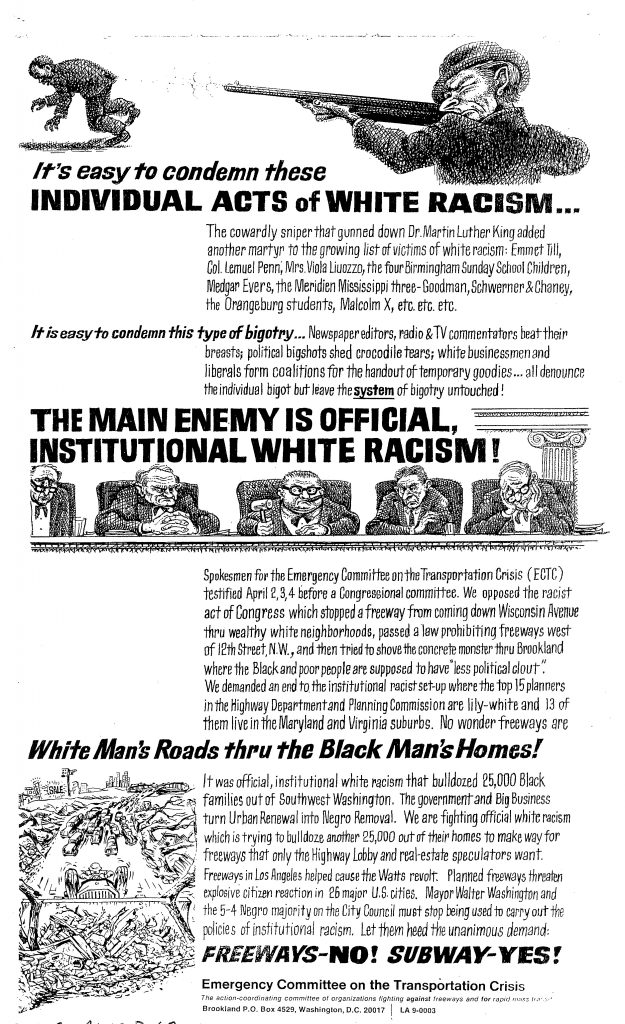 The thing I like about primary sources in history is that it occasionally reminds us of the things forgotten. We know of Emmet Till, the Birmingham Sunday school children, Medgar Evers, and Malcolm X, however those other people require Googling. Yet, the people who this flyer/poster was aimed at knew who was Col. Lemuel Penn.
The thing I like about primary sources in history is that it occasionally reminds us of the things forgotten. We know of Emmet Till, the Birmingham Sunday school children, Medgar Evers, and Malcolm X, however those other people require Googling. Yet, the people who this flyer/poster was aimed at knew who was Col. Lemuel Penn.
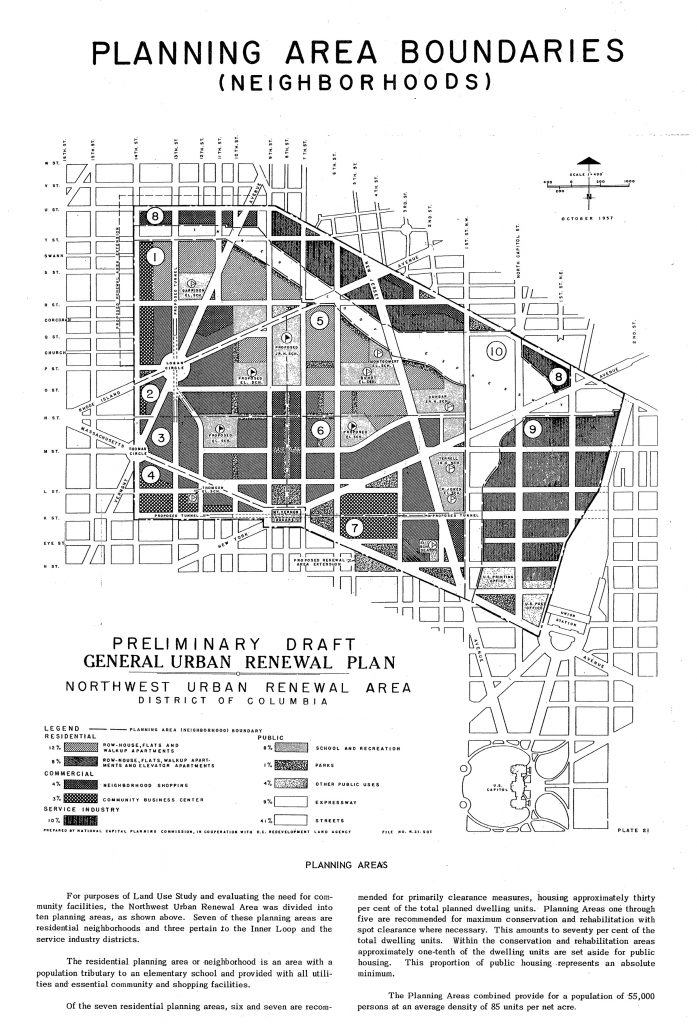
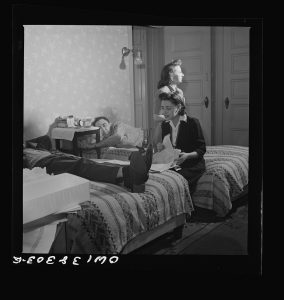
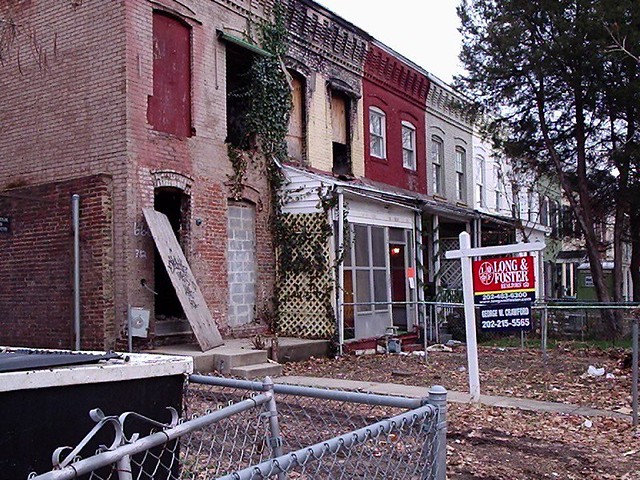
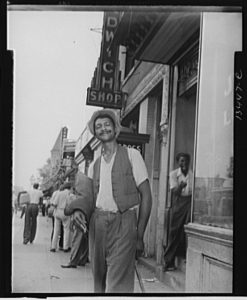
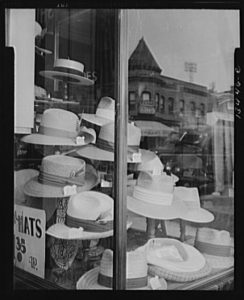
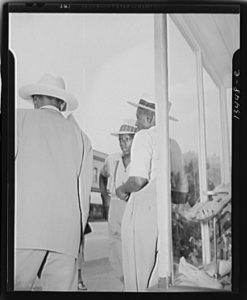
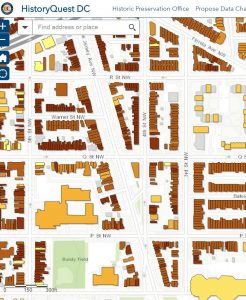
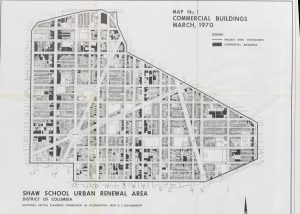
 This is just a placecard until I figure out how to deal with the change from MT to WP for the blog.
This is just a placecard until I figure out how to deal with the change from MT to WP for the blog.